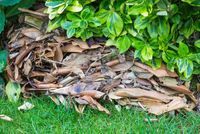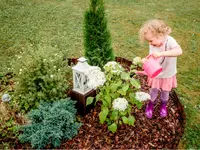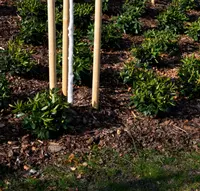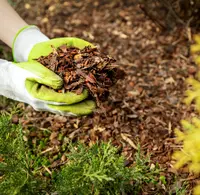
As autumn descends upon us, our gardens undergo a beautiful transformation, with leaves turning vibrant shades of red and gold and the air becoming crisp and cool. This is also a critical time for wildlife as they prepare for the coming winter months. While many of us enjoy the aesthetics of our gardens during this season, it's important to remember that they can also serve as a vital refuge for local wildlife. One simple and effective way to support wildlife in your garden this autumn is by using bark chippings.
Bark chippings are not just decorative elements for your garden; they play a significant role in creating a wildlife-friendly environment. Here's how they can help:
- Providing Shelter: Many small creatures seek shelter beneath the cover of fallen leaves and bark during the colder months. By spreading a layer of bark chippings around your garden, you offer a cozy hideaway for insects, reptiles, and amphibians. These natural hideouts protect them from predators and harsh weather conditions.
- Insulation and Moisture Regulation: Bark chippings help to regulate the moisture levels in your garden's soil. By acting as a natural insulator, they prevent the ground from freezing too deeply, which can be detrimental to the creatures that reside underground. This ensures that soil-dwelling animals, such as earthworms, remain active and continue their vital work of aerating the soil.
- Attracting Beneficial Insects: Bark chippings provide a habitat for a wide range of insects, including beetles and spiders. These insects are an essential part of the garden ecosystem, preying on pests that can harm your plants. Attracting these beneficial insects can help maintain a natural balance in your garden.
- Encouraging Decomposition: Over time, bark chippings break down and contribute to the nutrient cycle in your garden. This decomposition process enriches the soil and encourages the growth of plants and fungi, which, in turn, support a variety of wildlife.
- Enhancing Biodiversity: A garden that offers a variety of habitats, such as bark-covered areas, encourages a diverse range of wildlife to visit or take up residence. This can include hedgehogs, birds, toads, and more, all of which contribute to the ecological diversity of your garden.
- Reducing Weeding and Watering: Bark chippings act as a natural mulch that helps suppress weed growth, reducing the need for manual weeding. By covering the soil, they also help retain moisture, reducing the frequency of watering, which can benefit local wildlife by ensuring there is a consistent water source available.
- Protecting Plants and Trees: In addition to supporting wildlife, bark chippings can help protect your plants and trees from the harsh autumn and winter weather. They provide a layer of insulation around the roots, shielding them from frost and temperature fluctuations.
Incorporating bark chippings into your garden is a straightforward and eco-friendly way to create a wildlife-friendly environment. Ensure you use bark chippings from sustainable sources and avoid those treated with chemicals to promote a healthy and safe habitat for local fauna. Remember to refresh the chippings periodically, as they will break down over time.
This autumn, as you watch the leaves fall and enjoy the seasonal beauty in your garden, take a moment to appreciate the valuable role that bark chippings play in supporting the wildlife that shares this space with you. By making simple, wildlife-friendly choices in your garden, you can contribute to the preservation of local biodiversity and create a thriving, balanced ecosystem right on your doorstep.




